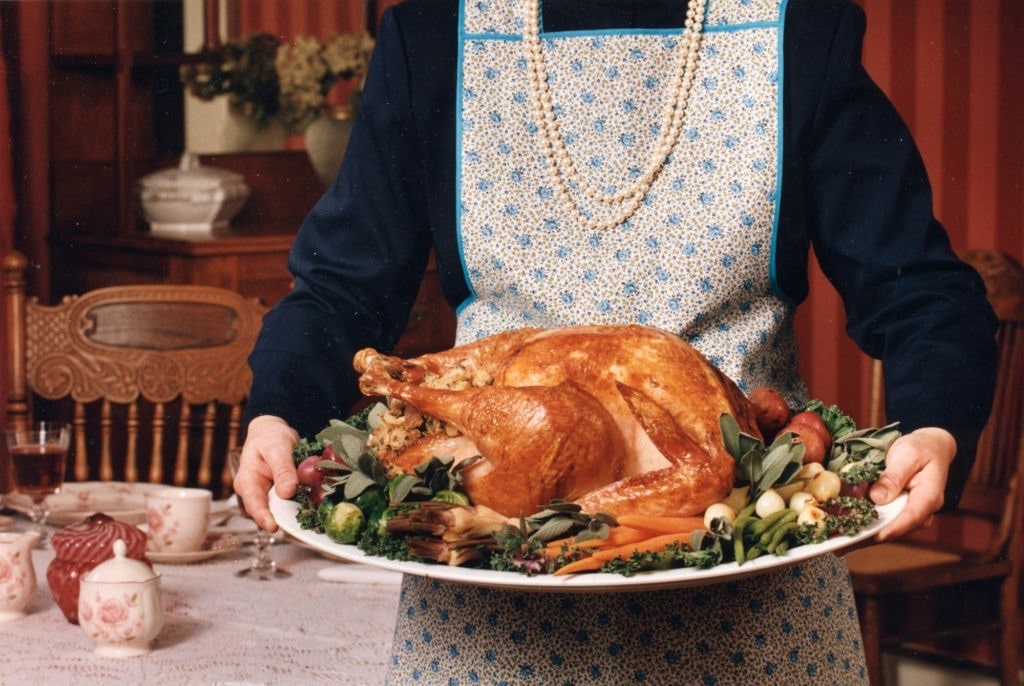US households will have to endure another expensive Thanksgiving this year. While the centerpiece turkey will be a little bit cheaper during the festivities, many other products surrounding the main event will still eat into your wallet. The October consumer price index (CPI) has been released, and despite the headline inflation rate easing, many of the kitchen staples cost more than a year ago or have renewed their upward trend.
An Inflation Report for Thanksgiving
According to the Bureau of Labor Statistics (BLS), the annual inflation rate eased to 3.2% in October, down from 3.7% in September. This came in slightly below the consensus estimate of 3.3%. The core CPI, which excludes the volatile energy and food components, slowed to 4%, down from 4.1% and below the market estimate of 4.1%. On a monthly basis, the CPI and core CPI were flat. Shelter was the primary driver of inflation last month, coming in at 6.7% year-over-year. Heading into the Thanksgiving holiday, everyone must be wondering about food.
Fowl Language This Year

(Photo by: Lindsey Nicholson/UCG/Universal Images Group via Getty Images)
Food prices are up 3.3% compared to a year ago, while supermarket costs are up about 2.1%. They were up 0.3% from September to October. A broad array of items continued to rise monthly, such as bread (+1%), milk (+1%), butter (+2.1%), flour (+0.9%), and meats, poultry, fish, and eggs (+0.7%).
While turkey is no longer officially included in the monthly CPI data, the American Farm Bureau (AFB) tracks the bird. Last month, the organization noted that prices are dropping because of strengthening production amid a sharp decline in Highly Pathogenic Avian Influenza. In August, the average price for the eight- to 16-pound turkey was $1.27 per pound, down 22% from the same time a year ago. This will bolster consumption levels by about 6% this year, the US Department of Agriculture said in its September World Agricultural Supply and Demand Estimates.
Meanwhile, according to the Wells Fargo 2023 Thanksgiving Consumer Report, turkeys will cost consumers 9% less this year.
During last year’s Thanksgiving tradition, many families ditched turkey and opted for alternatives, including pizza. By the time kids return from their indoctrination centers and are filled with pro-socialist nonsense, the household can enjoy turkey savings. At the same time, moms and dads or aunts and uncles may want to avoid other meats.
Beef and veal have sharply risen this year, including a 1.2% jump in October, something of which Liberty Nation has regularly warned. Additionally, pork and ham prices surged 1.3% and 0.5%, respectively, last month. Chicken costs have dropped 0.4% from a year ago but have swelled for four consecutive months.
The AFB has yet to publish its annual look at the average price of a Thanksgiving meal. Last year, a Thanksgiving feast for ten was $64.05. It should be in the same ballpark this year as food-at-home prices are higher than in 2022, and cumulative grocery prices are up close to 17% in the last two years. Here is a breakdown of some of the vital Thanksgiving menu items:
- Canned cranberries cost 60% more than last year.
- Sweet potatoes are up 4%.
- Russet potatoes are at record highs.
- Canned green beans have advanced 9% year-over-year.
- Leafy greens have declined by approximately 10%.
- Canned pumpkin pie filling has risen 30% from last year.
Feelin’ Fine
The American people maintain a sour opinion of the US economy. Who can blame them? Purchasing power has eroded, price inflation is above trend, borrowing costs have ballooned, and the average family of four spends an extra $700 per month to live in the United States. Still, the public feels some gratitude this year as 80% of consumers plan on celebrating the annual tradition with a Thanksgiving meal, according to Purdue University’s Center for Food Demand Analysis and Sustainability survey. Despite the celebrations, it is still going to hurt everyone’s wallets.
“The higher food spending is likely a result of rising food prices forcing consumers to budget more to purchase their typical basket of grocery items. Households that aren’t spending more this year are likely buying less or substituting in more affordable food items to keep costs down,” said Elijah Bryant, a survey research analyst at the center and co-author of the report. Maybe next year it will be cheaper.




